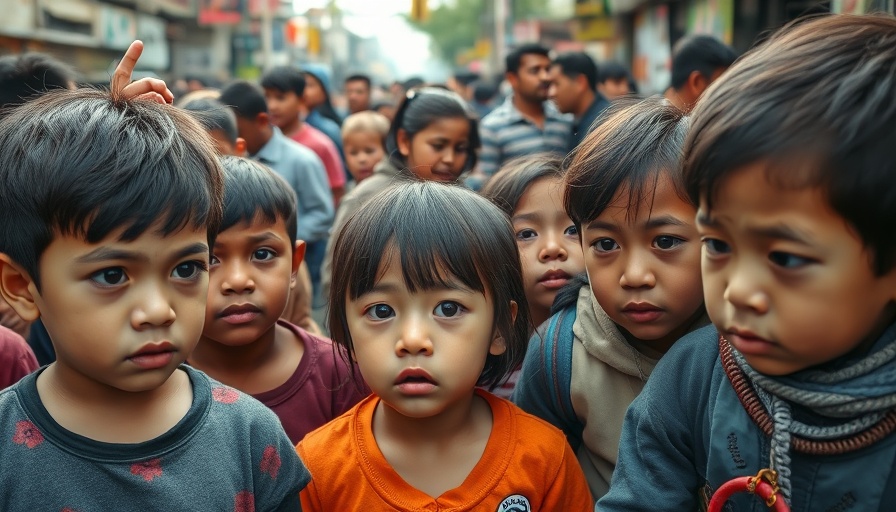
The Dire Humanitarian Crisis in Gaza
The situation in Gaza has reached a staggering breaking point, particularly affecting its youngest inhabitants. Recent reports have brought startling images of malnourished children struggling to survive amidst ongoing conflict and crippling blockades. As highlighted in reports from the region, approximately 600 trucks of aid are urgently needed to relieve the humanitarian pressure on this area, yet only a limited number of trucks have entered due to restrictions by the Israeli government.
In Call for arms embargo on Israel as Gaza’s children face starvation | BBC News, the discussion dives into the urgent humanitarian crisis affecting child populations in Gaza, highlighting key insights that sparked deeper analysis on our end.
Understanding the Severity of Malnutrition
Malnutrition among children in Gaza is not just a byproduct of war; it’s a consequence of the blockade that has lasted for nearly three months. Pediatricians have documented bone-thin children displaying signs of severe malnutrition. Reports from doctors, such as those who've treated six-month-old Si Ashure, reveal alarming circumstances—children are literally wasting away due to lack of specialized milk formula and nutrient-rich food. As healthcare providers work under duress to treat these children, the emotional toll is unbearably heavy for both caregivers and patients alike.
The Complexities of Aid Distribution
The distribution of aid is fraught with complications. While Israel claims to be allowing aid to enter Gaza, on-the-ground reports suggest that chaos often erupts as desperate citizens overwhelm food distribution points. With the United Nations expressing frustration over the inadequacy of aid supplies, many community leaders argue that a straightforward solution involving open borders for aid would be more effective than the government’s current reliance on private companies to manage deliveries.
The Human Cost of War
The ongoing conflict has created an environment where children are severely traumatized. For instance, the sound of warplanes and gunfire has left indelible marks on the psyche of Gaza's children, some of whom display signs of fear and anxiety simply due to the relentless noise. The tale of Si Ashure reflects a more significant narrative of suffering; her mother's account of scavenging for basic necessities illustrates the overwhelming challenges families face under siege. These stories are not just statistics; they’re the lived experiences of individuals caught in a war they cannot control.
What Can We Do?
For those of us in the UK, the story from Gaza may seem distant, yet, global awareness is critical. Understanding the plight of Gazans offers insight into broader international humanitarian challenges, fostering empathy and prompting actions, whether through advocacy or financial contributions to aid organizations. Being informed empowers us to be part of conversations with local representatives about the importance of addressing such humanitarian crises.
As individuals, we might consider participating in fundraising events or supporting NGOs that work directly to deliver aid to affected areas. Moreover, engaging in discussions about global issues can influence public sentiment and, eventually, policy decisions at national levels.
Ultimately, we should not turn a blind eye to the suffering, especially of the youngest members of our global society. The plight of Gaza's children should remind us of our shared humanity and our collective responsibilities to advocate for peace and relief.
In Call for arms embargo on Israel as Gaza’s children face starvation | BBC News, the discussion dives into the urgent humanitarian crisis affecting child populations in Gaza, highlighting key insights that sparked deeper analysis on our end.
 Add Row
Add Row  Add
Add 




 Add Row
Add Row  Add
Add 

Write A Comment